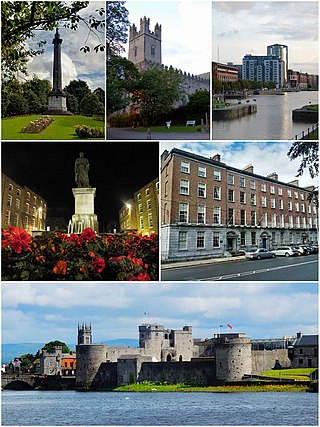
Limerick is a city in western Ireland, in County Limerick. It is in the province of Munster and is in the Mid-West which comprises part of the Southern Region. With a population of 102,287 at the 2022 census, Limerick is the third-most populous urban area in the Republic of Ireland, and the fourth-most populous city on the island of Ireland. It was founded by Scandinavian settlers in 812, during the Viking Age.
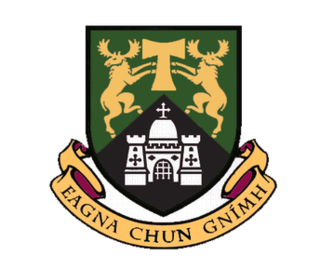
The University of Limerick (UL) is a public research university institution in Limerick, Ireland. Founded in 1972 as the National Institute for Higher Education, Limerick, it became a university in September 1989 in accordance with the University of Limerick Act 1989. It was the first university established since Irish independence in 1922, followed by the establishment of Dublin City University.

Caherdavin is a northern suburban district of Limerick city in the mid-west of Ireland. As of 2022, the population of Caherdavin is 7,364.
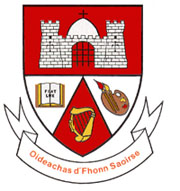
The Limerick Institute of Technology was an institute of technology, located in Limerick, Ireland. The institute had five campuses that were located in Limerick, Thurles, Clonmel, as well as a regional learning centre in Ennis. The main campus was located at Moylish Park in Limerick adjacent to Thomond Park and housed the Faculty of Applied Science, Engineering and Technology and the School of Business and Humanities. The School of Art & Design is located at the Clare Street and Clonmel campuses.

Dunnes Stores is an Irish multinational retail chain that primarily sells food, clothes and household wares. It was founded by Ben Dunne in 1944. In addition to its main customer base in Ireland, the chain also has operations in Spain. The format of most of the chain's stores in Ireland involves a grocery supermarket operating alongside a clothing/textiles store, although some stores contain only textiles and some contain only a supermarket. The grocery side of the business does not operate outside of Ireland, save for a limited grocery range in the Spanish stores. The larger stores usually contain a café branded as either Café Sol or Dunnes Stores Café.

As with other cities in Ireland, Limerick has a history of great architecture. A 1574 document prepared for the Spanish ambassador attests to its wealth and fine architecture:

Debenhams Ireland was a national chain of department stores in Ireland, that was owned ultimately by Debenhams plc. It was largely based on the former Roches Store chain, though after that business divested its grocery units.
In the Republic of Ireland, the retail sector provides one of the largest sources of employment in the economy, representing over 12% of the workforce. As of 2017, approximately 40,000 wholesale and retail businesses employed almost 280,000 people in Ireland, with the Department of Enterprise, Trade and Employment reporting that 90% of these businesses were Irish-owned.

Desmond Fitzgerald is an Irish medical doctor and academic leader. On 6 October 2016, Fitzgerald was announced as the President-elect of the University of Limerick. He took up this role in early 2017, becoming the fifth President. He resigned in May 2020 for "personal health concerns" citing the COVID-19 pandemic. Prior to this, Fitzgerald held the positions of Vice President for Health Affairs with University College Dublin and Chief Academic Officer at Ireland East Hospital Group from 2015 to 2016.

Limerick railway station also known as Colbert Station or Limerick Colbert serves the city of Limerick in County Limerick, Ireland. It is on Parnell Street and is the main station on the Limerick Suburban Rail network. It has approximately 2,500 rail passengers a day travelling on four rail routes. The Bus Éireann bus station on site services approximately one million passengers a year, with 125 buses departing each day.

O'Connell Street is the main thoroughfare of the city of Limerick. It was previously known as George's Street until it was renamed after Daniel O'Connell. The street runs in parallel to the River Shannon and forms part of an overall thoroughfare, along with Rutland Street and Patrick Street, that bisects Limerick City Centre in a north east to south west direction. The street is about a mile in length, starting at the Arthurs Quay / Denmark Street junction and ending at The Crescent. A monument to Daniel O'Connell stands at the centre of The Crescent overlooking O'Connell Street. The street is noted for its Georgian architectural heritage.
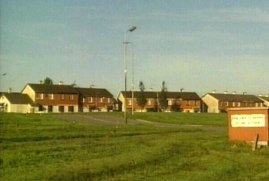
Moyross is a suburb and council estate in Limerick city in Ireland. Moyross is located on the city's north side and is the largest housing estate in Limerick.

The Limerick–Ballybrophy line is a 52.5 miles (84.5 km) railway line connecting the city of Limerick with Ballybrophy in County Laois. The line diverges from the Limerick to Limerick Junction railway line at Killonan Junction and continues in a north east direction with five intermediate stops at Castleconnell, Birdhill, Nenagh, Cloughjordan and Roscrea. The line ends at Ballybrophy where it joins the Dublin-Cork Main Line.

Roches Stores was a national chain of department stores in Ireland, that was owned by the Roche family.
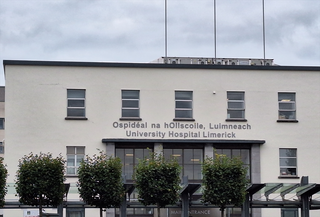
University Hospital Limerick is a Level 4 hospital located in Dooradoyle, Limerick, Ireland. It is managed by UL Hospitals Group.

Newtown Pery is an area of central Limerick, Ireland, and forms the main city centre of the city. The district is known for its Georgian architectural heritage and is the core area of Limerick's Georgian Quarter. It is one of the three towns that make up modern-day Limerick City Centre, the other two being the older Englishtown and Irishtown, which date from the medieval period. Newtown Pery houses the largest collection of Georgian townhouses in Ireland outside of Dublin. In 1837, Samuel Lewis in his Topographical Dictionary of Ireland described Newtown Pery as "one of the handsomest towns in Ireland".
Cruises Street is a main shopping street of Limerick, Ireland. The street takes its name from Cruises Royal Hotel, the once well known Limerick landmark that stood where Cruises Street is now. Cruise's Hotel opened in 1791 and for over 200 years provided a focal point and an entertainment venue for Limerick people and visitors to the city for generations. The hotel was very well known throughout the country which fronted onto O'Connell Street. Daniel O'Connell, the famous Irish political leader in the 19th Century stayed at the hotel. It also had a presidential suite as Presidents and dignitaries who visited Limerick, regularly stayed there. The Hotel was demolished in 1991 to make way for the new pedestrianised street which opened in late 1992.

Henry Street is a street in Limerick, Ireland. The street is named after Edmund Henry Pery, 1st Earl of Limerick who had a house on the street which is now occupied by the Hibernian Insurance Company. The street runs parallel to the River Shannon and O'Connell Street.
Bedford Row is a shopping street in Limerick, Ireland. The street is named after John Russell, 4th Duke of Bedford who was Lord Lieutenant of Ireland from 1757 to 1761. The street starts at a junction with O'Connell Street and continues westwards forming a junction with Henry Street and continues between Dunnes Stores and the Augustinian Church and ends at Howley's Quay.
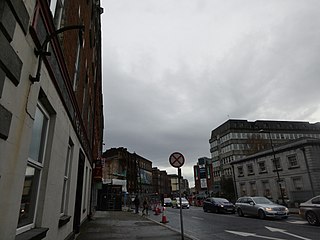
Rutland Street is a street in central Limerick, Ireland that forms part of the main central thoroughfare of the city which incorporates Rutland Street, Patrick Street and O'Connell Street. Named after the 4th Duke of Rutland, Charles Manners, who was appointed Lord Lieutenant of Ireland in 1784 and visited Limerick in 1785. Rutland Street along with nearby Bank Place features some of Limerick's earliest examples of Georgian Architecture. It was the first street developed as part of Edmund Sexton Pery's plans for Newtown Pery, and was the first part of the great Georgian expansion of Limerick south from the medieval city. In 1901, Irish nationalists suggested renaming the street to Hugh O'Neill Street.
















